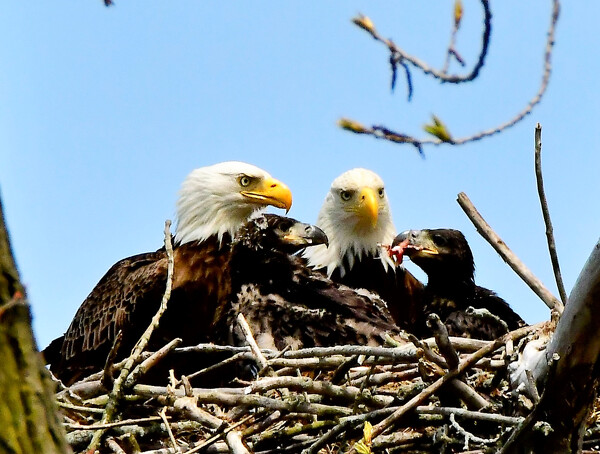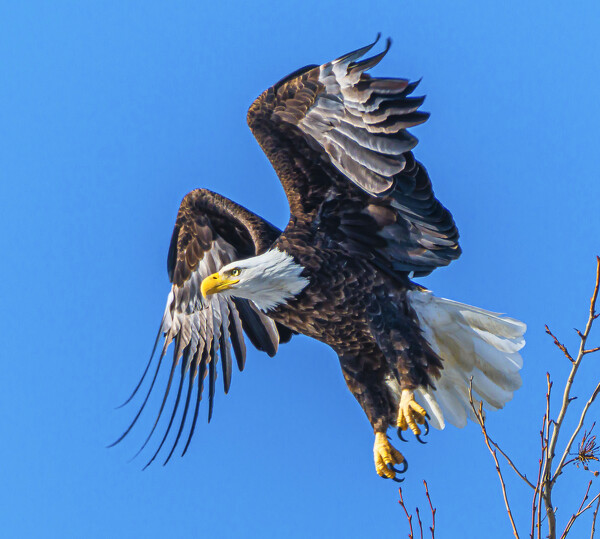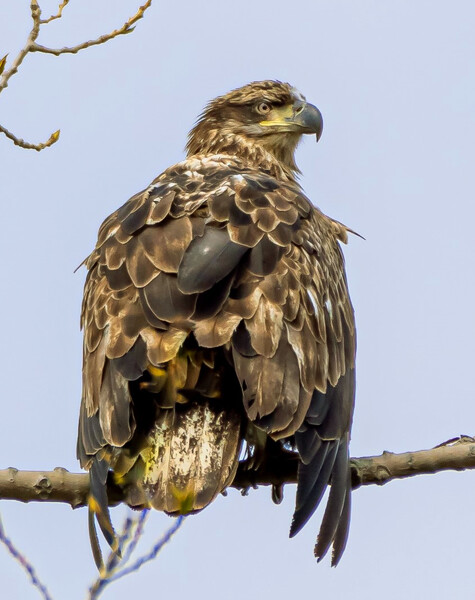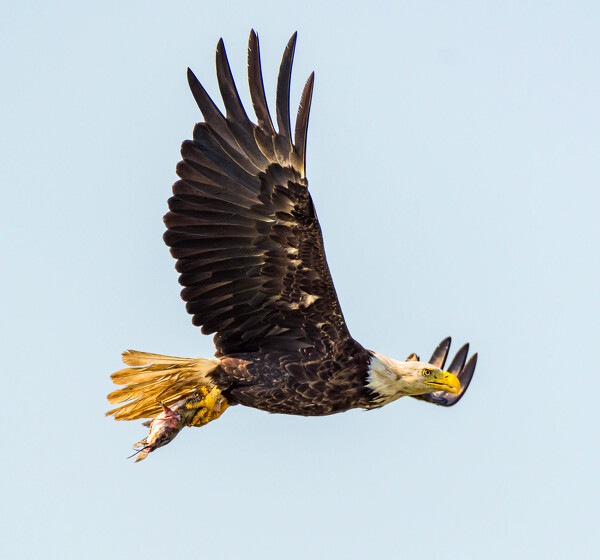
Bald eagles in Mercer County.
Photography by Ken Bingham
CELINA - The Grand Lake region remains a hospitable habitat for bald eagles, with an estimated 14 eagle nests in Mercer and Auglaize counties, according to Brett Beatty, wildlife management supervisor at Ohio Department of Natural Resources.
Now is a great time to spot the majestic birds of prey as they initiate courtship and nest-building activity, according to ODNR. Their large size and dark body can more easily be seen against the backdrop of wintry snow and ice.
Locally, eagles have tended to build their nests in the 1,408-acre Mercer County Wildlife Management Area in Montezuma and near Behm's Landing, Prairie Creek, the Wabash River and Menchhofer Woods.
Beatty said an ideal site to watch for bald eagles is bodies of water with ample fish, in close proximity to a nest. Hecht's Landing and Windy Point in Montezuma are excellent places to observe bald eagles as well as the stone pier near Boardwalk Grill along West Bank Road in Celina, according to Dave Shaner of St. Marys, a self-taught, avid wildlife photographer.
"Typically you see them in like a large cottonwood or sycamore," Beatty said. "They generally prefer natural structures, as opposed to like an osprey which readily go to a radio tower or a manmade structure."
Beatty also pointed to other sites where bald eagles are known to frequent.
"Treatment trains that were created around the lake - a good spot," he said. "Also, at the Mercer Wildlife area on the southwest side of the lake, there's an observation tower, so go there with binoculars or spotting scope."

A bald eagle in Mercer County.
Photography by Ken Bingham

A bald eagle in Mercer County.
Photography by Ken Bingham
Ohio's bald eagle population has grown dramatically in recent years, with an estimated 910 nesting pairs statewide in 2023, according to an ODNR news release.
That's a 13% increase from the 806 bald eagle nests documented in the state in 2021, Beatty said.
The bald eagle can be found in small concentrations throughout the country, particularly near sizable bodies of water, both natural and man-made such as Grand Lake.
Beatty credits the uptick in bald eagles to a "slow grind" conservation effort.
Habitat destruction and degradation, illegal shooting and contaminated food sources, largely as a consequence of the pesticide DDT, decimated the eagle population by the 1970s, according to the U.S. Fish and Wildlife Service.
Eagle eggs were affected by increased pesticide use during the '50s and '60s, according to Ohio History Central. The eggs did not hatch because they were either infertile or their shells were so thin the weight of the adult would crush them. No young birds were surviving to replace the dying adults.
Bald eagles were officially declared an endangered species in 1967 throughout the United States. They then were listed as endangered throughout the continental U.S. in 1978 by the U.S. Fish and Wildlife Service.
Bald eagles were removed from the federal list of threatened and endangered species in 2007 and Ohio's endangered list in 2012.
"(It's been) a long time getting here," Beatty said about the rebounding eagle numbers, praising the efforts of private landowners and volunteers to protect habitats. "It's kind of a slow grind because eagles take a few years before they reach maturity for breeding age, and then, they have to be successful."
Due to the steep increase in nests throughout Ohio, Beatty said ODNR no longer monitors bald eagles as intensely as it once did.
People, though, often share their sightings of bald eagles with Beatty.
"They're like, 'I just wanted to call and tell you that I saw a bald eagle,'" he said. "It's one of those species that even people that aren't big wildlife fanatics, it's still something that just … gets them excited about wildlife and nature. Just all the energy and positive stuff that are around bald eagles is just fun."

A juvenile bald eagle in Mercer County.
Photography by Ken Bingham

An eagle soars over Mercer County
Photography by Ken Bingham

